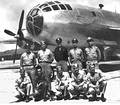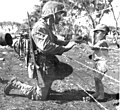HEADLINE-ASIA GEOPOLITICS | AS CHINA TENSIONS RISE – US revives Pacific airfield
North Field (Tinian)
.
.
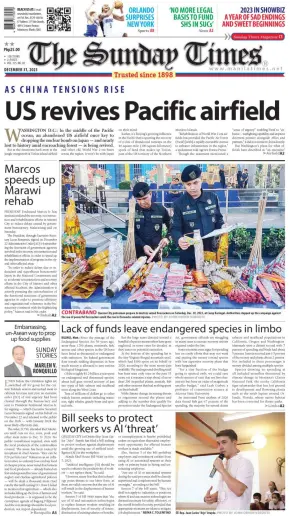
(UPDATE) WASHINGTON D.C.: In the middle of the Pacific ocean, an abandoned US airfield once key to dropping the nuclear bomb on Japan — and nearly lost to history amid encroaching forest — is being revived.
But as the Americans hack away at the jungle overgrowth at Tinian island airfield and other old, World War 2-era bases across the region, it won’t be with Japan on their mind.
Rather, it’s Beijing’s growing influence in the Pacific that is spurring the recovery of a slew of abandoned runways on the 40-square-mile (100-square-kilometer) speck of land that makes up Tinian, part of the US territory of the Northern Mariana Islands.
“Rehabilitation of World War 2-era airfields has provided the Pacific Air Forces (Pacaf) [with] a rapidly executable avenue to enhance infrastructure in the region,” a spokesman told Agence France-Presse.
Though the statement mentioned a “sense of urgency” enabling Pacaf to “enhance… warfighting capability and improve deterrent posture alongside Allies and partners,” it did not mention China directly.
But Washington’s plans for what officials have described as “an extensive” facility on Tinian comes amid a serious military pivot to the Pacific in recent years — and as China builds its own new bases in the region, including in disputed waters.
“The most comprehensive and serious challenge to US national security is the (People’s Republic of China’s) coercive and increasingly aggressive endeavor to refashion the Indo-Pacific region and the international system to suit its interests and authoritarian preferences,” the Department of Defense’s 2022 planning document, called the National Defense Strategy, reads.
Tinian’s old military airfield “has extensive pavement underneath the overgrown jungle. We’ll be clearing that jungle out between now and summertime,” Air Force General Kenneth Wilsbach recently told Japanese outlet Nikkei Asia.
Meanwhile, military projects for “fuel and airfield development” at the island’s nearby civilian airport are already underway, according to the Pacaf spokesman.
Back to the future
If little known now, the airfield at Tinian was perhaps the most important — and the busiest — in the world in 1945, as its six hastily built runways played host to US B-29 bombers carrying out missions against Japan, some 1,500 miles (2,300 kilometers) away.
Including, on August 6 and August 9 of that year, the planes that dropped nuclear bombs on Hiroshima and Nagasaki.
“Little Boy” and “Fat Man,” as the weapons were known, killed some 200,000 people.
In the last three years, money annually allocated to Indo-Pacific military construction costs has doubled, from $1.8 billion in 2020 to just shy of $3.6 billion in 2023, according to a recent report from the Congressional Research Service (CRS).
It’s part of a Pentagon strategy to open a range of flexible military bases able to operate outside of the larger, longstanding installations in Japan, South Korea and the American island territory of Guam.
On Tinian, initial work started near the civilian airport in February 2022, before extending toward the World War 2 airfield on the north of the island.
Within two years, tarmac rehabilitation and the construction of fuel tanks are set to be completed, at a budget of at least $162 million, as part of contingency plans in the event “access to Andersen Air Force Base or other western Pacific locations is limited or denied,” according to Air Force financial documents reviewed by AFP.
Across multiple projects at Tinian, the total cost is unclear, “due to differing timelines and requirements, and the fact that not all work is being executed by the US Air Force,” the Pacaf spokesman said.
Tinian Naval Base
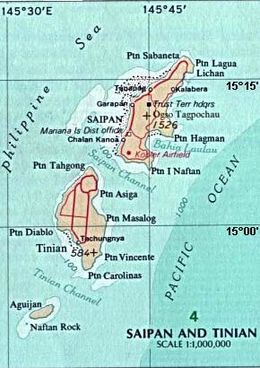
Tinian on an area map, southwest of Saipan
|
|
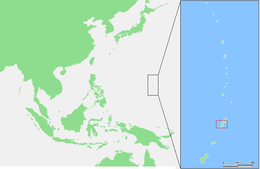 |
|
| Geography | |
|---|---|
| Location | Pacific Ocean Philippine Sea |
| Coordinates |  15°00′N 145°38′E 15°00′N 145°38′E |
| Archipelago | Marianas |
| Area | 101.22 km2 (39.08 sq mi)[1] |
| Length | 19.32 km (12.005 mi) |
| Width | 9.66 km (6.002 mi) |
| Administration | |
|
United States
|
|
| Administration | |
| Largest settlement | San Jose |
| Demographics | |
| Population | At peak 150,000 Troops in 1945 (used 1944-1945) closed in 1947 |
| Additional information | |
| Also a major United States Army Air ForcesAir Base for B-29 bombers | |
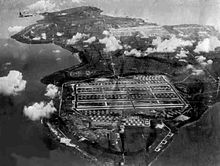
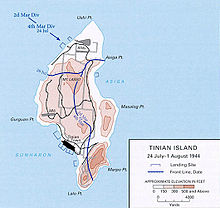
Tinian Naval Base and Naval Air Facility Tinian (NAF Tinian) was a major United States Navy sea and air base on Tinian Island, part of the Northern Mariana Islands on the east side of the Philippine Sea in the Pacific Ocean. The base was built during World War II to support the many bombers and aircraft fighting and patrolling in the South West Pacific theatre of the Pacific War. Numerous naval facilities were built on the entire island of 101.22 km (39 sq miles). The main port was built at the city and port of San Jose, also called Tinian Harbor. All construction was done by the Navy’s Seabees Sixth Construction Brigade with minor help from the 64th Army Engineers, including the main two airports: West Field and North Field. United States Army Air Forces operated long-range bombers out of the air base built and maintained by the Seabees.[2][3][4] The base was decommissioned on 1 June 1947.






History
Tinian, the third of the three largest islands of the Mariana Islands, is located south of Saipan across the 3-mile-wide Saipan Channel. Tinian, north to south, is 12 miles long and east to west 6 miles wide. It has mostly flat terrain, perfect for runways. Tinian was taken after the Battle of Tinian, against Empire of Japan, on 1 August 1944. The invasion of Tinian was mostly conducted by troops from Saipan. During the invasion, Seabees constructed wooden ramps for the Landing Vehicle Tracked (LVT) on one small beach, as 90% of Tinian coastline is a cliff face. Naval Advance Base Saipan construction started on 15 June 1944.
Before the invasion of Tinian, Japan had 8,500 troops and 15,700 Japanese civilians on Tinian. Japan had developed Tinian into a large sugar plantation and sugar refining plant. They had built three small runways on the island. After the Battle of Tinian few Japanese troops and Japanese civilians survived. Seabees first had to remove massive amounts of war debris. Japanese base facilities that were repairable were quickly repaired. Most of the city of San Jose was destroyed in the battle of Tinian.[5]
At its peak 150,000 U.S. troops were stationed on the island. The Seabees laid out the base streets like Manhattan, with Manhattan street names. The small bit of land not built on was called Central Park. The small town of Sunharon was renamed The Village after Greenwich Village. The Tinian Naval hospital was built near Central Park. The main north-south roads were 8th Ave and Broadway. North Field was built on a place Japanese construction had already started. Merchant NavyLiberty ships and Victory ships started to unload supplies at the harbor on 2 August 1944. Before the harbor was completed cargo was placed in Landing craft tank or type B barges and unloaded on the beaches.[6][5][7][3][8][9]
Aguiguan
Aguiguan is a very small island, only 7.01 km2 (2.71 sq mi), just south of Tinian across the Tinian Channel. Aguiguan had a small contingent of Japanese troops stationed there. As they were isolated and not hindering Tinian Naval Base, they did not surrender until 4 September 1945, two days after the surrender of Japan. The Aguiguan surrender was hosted by United States Coast Guard CutterUSCG 83525. For the surrender, U.S. Navy Admiral Marshall R. Greer received the agreement from Japanese Second Lieutenant Kinichi Yamada.[10]
Operations
After the opening of Tinian Harbor, the unloading of the many cargo ships took place. The ships supplied the vast air bases, the sea base and the many troops passing through the island on the island hopping campaign. Some of the troops arrived from the Kwajalein Atoll and Enewetak Atoll on Navy ships. Submarine chasers, like PC-1080 and PCSC-1452, patrolled the water around Tinian, hunting for Japanese submarines. Operation Ivory Soap was a convoy of ships used to provide aircraft repair and maintenance at Tinian and other Pacific Theatre of Operations.
On 26 July 1945 USS Indianapolis anchored 1,000 yards off Tinian and unloaded the radioactive parts of the A-bombs. Next the Indianapolis stopped at Guam, then departed for the Philippines, but was hit by two torpedoes by Japanese submarine I58 and sank on 30 July. Indianapolis survivors were found in the ocean three and a half days later.[11][12][13]
On 1 December 1944 VP-111 Patrol Squadron was transferred to Tinian. US Navy Patrol Wings used PB4Y-1, PB4Y-2, P4M-1 and P2V-6/5F/7S/SP-2H to patrol from Tinian airfields. Fleet Air Wing Eighteen, a Navy Patrol Wing moved its headquarters to NAF Tinian on 25 May 1945. Patrol Squadron One (VP-1) began patrols at Tinian on 21 June. On 1 June 1947 NAF Tinian was disestablished. NAF Tinia was closed, as it was not close enough to mainland Asia to be useful, as Okinawa is.[14][15][16]
Airfields
The Navy’s Seabees built and maintained the six 8,500-feet runways that made up West Field and North Field. At first, the U.S. Navy patrol planes operated from the North Field runways. On 15 November, with the North Field runway completed, the Navy moved to West Field. The Navy’s West Field had 16,000 feet of taxiway, 70 hardstands, 345 quonset huts, 33 buildings for repair and maintenance facilities, seven ammunition storage magazines and an air control tower. At its peak, the two airfields were able to handle 2,500 fighter planes and 597 bombers.[17]
The large air bases were mainly used for Boeing B-29 Superfortress that began long-range bombing on the homeland of Japan, 1,500 miles away. By the end of the war 19,000 combat missions were launched against the Japan mainland, through around-the-clock take-offs.
The 509th Composite Group‘s Boeing B-29 Superfortress Enola Gay departed North Field on 6 August 1945 with the atomic bomb named Little Boy dropped on Hiroshima. Boeing B-29 Superfortress Bockscar departed North Field on 9 August with the atomic bomb named Fat Man dropped on Nagasaki. The surrender of Japan took place on 15 August, with the formal surrender signed on 2 September 1945, thus ending World War II and avoiding the potentially costly Invasion of Japan. After the war, West Field became Tinian International Airport.
Facilities
Tinian Naval Base, and NAS Tinian Facilities:[3]
- West Field
- North Field, the largest airport in the world at that time, 20 miles of runways, 425 feet wide.
- White Beach, (Unai Chulu Beach) ramp for Landing Vehicle Tracked.
- Tinian Breakwater, 4,805 feet long, with cargo ship berthing on the 1,210 feet inner breaker, started November 1944 and completed on March 6, 1945.
- Tinian Harbor, also called San Jose Harbor.
- Pontoon pier built
- Two masonry piers
- Two Marine railway for boat repairs
- Existing roads widened and 34 miles of new roads built
- Tents housing and staff Quonset huts housing
- Barracks for 12,000 Seabees
- Barracks for 13,000 Naval personnel
- Barracks for 21,500 Army personnel
- Barracks for 50,000 Marines
- Barracks for temporary troops
- Naval hospital 1,000 beds
- Army hospital 600 beds
- Camp Churo, Japanese civilians camp, with 100 bed hospital.
- Warehouse storage 386,000 square feet, two million sq ft open storage and 63,000 cubic feet refrigerated storage
- Chapels
- Marines Seventh Field Depot
- Ammunition storage (separate from other storage)
- Bomb storage, 20,000-ton capacity (separate from other storage)
- Water supply and purification units (water from wells and Hagoi Lake)
- Coral quarry
- Large fuel tank farm
- Crash boat base
- Aviation overhaul shop
- Motor pool
- Quartermaster laundry
- Navy bank
- Fleet post office FPO# 3247 SF Tinian Island, Marianas Islands
- Mess halls
- Navy communication center
- Power stations
Postwar:
- International Broadcasting BureauVoice of America broadcast site.
- Navy training camp, Camp Tinian with Seabees and United States Marine Corps
Camp Churo
Camp Churo was founded by the UN Navy as a place for Tinian civilians. Camp Churo civilian internment camp was divided into two camps. One part held 8,278 Japanese and Okinawan civilians whom Japan had brought to the island to work the sugarcane fields. The other part had the 2,357 Koreans that Japan had forced to work the sugarcane fields. At its peak 11,479 were living at Camp Churo, the increase mostly from births.[18]
The camp residents were given two meals a day and the offer to work for pay and extra food. Pay for skilled workers was 50 cents per day and 35 cents for unskilled workers; each also had an extra meal. The camp had crops and gardens growing fresh food. A 3,000-seat school was opened for the children. A craft shop was opened for handcrafted product making. The Navy operated a movie theater some evenings. The Navy also operated a 100-bed hospital in the camp. In 1946 the civilians were returned to their homeland.[19][20][21][22]
Post World War II
The Seabees battalion on Tinian was decommissioned on 20 June 1945. During the Battle of Tinian five Seabees were killed and 38 received the Purple Heart.[23] Five Seabees were awarded the Navy and Marine Corps Medal for heroism. In 1947 Tinian was transferred from the U.S. Navy to the Trust Territory of the Pacific Islands, a territory controlled by the United States. While most of the major bases on the island changed to inactive, the United States military was still on the island.
In 1962 Tinian transferred to the administration of Saipan as a sub-district. In 1978, Tinian became a municipality in the Commonwealth of the Northern Mariana Islands. In 1983 a 50-year, 16,100-acre lease agreement was made, the land is called “Military Lease Area (MLA)”. The lease gives use of the land to the U.S. Navy. The U.S. Navy used most of the land area for training exercises at Camp Tinian, a small mostly mobile camp. As part of the lease in the 1980s, one runway at North Field was reactivated so U.S. Air ForceC-130s could support of United States Marine Corps training exercises.[24] The lease agreement gives the U.S. Department of Defense the option of an added 50 years to the lease. Currently, North Field has only the unused runways remaining. A Voice of America radio relay station was built on Tinian.[25]
Historical markers
- U.S. 107th Seabees Monument, a SeaBee Memorial, is on Tinian at 8 Ave and 86th street, the site of the Seabees camp.[26]
- At Grand Island, Nebraska, is a Tinian Island Historical marker. Grand Island is where the Sixth Bomb Group trained before being deployed to Tinian Island in December 1944. Historical marker is titled: B-29 Superfortress / 6th Bomb Group / Tinian Island at
 40.969196°N 98.319081°W at the Central Nebraska Regional Airport.[27]
40.969196°N 98.319081°W at the Central Nebraska Regional Airport.[27] - At North Field is the “Marker “No. 1 Bomb Loading Pit” where Little Boy was loaded into Enola Gay at
 15.083696°N 145.634057°E.[28]
15.083696°N 145.634057°E.[28] - At North Field is the Marker “No. 2 Bomb Loading Pit” where Fat Man was loaded into Bockscar at
 15.083°N 145.634°E[29]
15.083°N 145.634°E[29] - 313th Bomb Wing (VH), Twentieth Air Force marker at United States Air Force Academy, Colorado.[30]
- Ushi Point Cross and Memorial at
 15.100°N 145.6443°E.[31]
15.100°N 145.6443°E.[31] - Suicide Cliff in Tinian is the spot where hundreds of Japanese citizens and troops jumped to their death, rather than surrender in 1944, due to Japanese propaganda and brainwashing. Many Japanese residents on Tinian, men, women and children jumped to the coastal rocks and waves below at
 14.938°N 145.652°E.[32]
14.938°N 145.652°E.[32]
Gallery
-
Map of the Battle of Tinian from 1944
-
313th Bombardment Wing Tinian HQ in 1945
-
Assembly Building where A-bombs were assembled on Tinian
-
B-29 Superfortress graveyard, North Field, Tinian, 1946. During the war, bulldozers were always waiting at the ends of the runways. Any problem with takeoff or landing and the B-29’s were bulldozed off the runway to keep the flow moving.
-
No. 1 Bomb Loading Pit Historical marker at North Field
-
B-29s on West Field parking ramp
-
Enola Gay, pilot Paul Tibbets and members of the ground crew
-
Flight crew of the Bockscar
-
North Field on Tinian
-
West Field on Tinian
-
40th Bombardment Group B-29 landing on Tinian in 1945
-
B-29s of the 462d Bombardment Group on Tinian in 1945
-
US Navy VFA-14‘s Curtiss SB2C Helldiver over Tinian in 1947, before base closure
-
A US Marine gives candy to Japanese child at Tinian internment camp

@[email protected]












